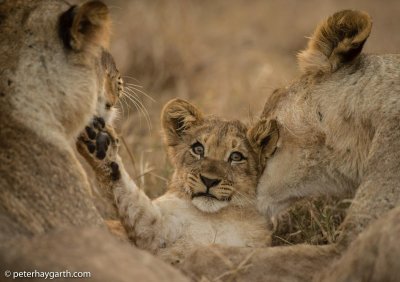|

The impact of commercial poaching, fuelled by demand from Asian traditional markets, is well known. For example, rhinos poached for their horns has decimated populations in Kruger National Park, and interventions by park rangers and deployment by soldiers from the South African Defence Force have been rather ineffectual. Poachers from Mozambique as well as local South Africans were heavily involved, and while poaching kingpins were well known, Mozambican authorities seemed powerless to arrest any of them. Rhinos were completely eliminated from Botswana. Horns mainly ended up in Vietnam and Laos. Similarly, lion bone trade from South Africa was a highly lucrative source of income for South African lion breeders, as well as smaller operators in other African lion range states who poached wild lions for their products.
However, the impact of African traditional medicines has hardly made any waves in the mainstream media and social media. Recently, and excellent report by Jennah Green and co-authors should have had people opening their eyes (Front. Ecol. Evol., Volume 10 - 2022).
For lions specifically, four out of five practitioners interviewed listed lions among their top three profitable derivatives. Traditional healing practices in South Africa are sought after for both medicinal and magico-religious purposes. Green et al state that the use of animals and plants as “traditional” remedies for medical purposes has a long history of cultural importance in South Africa, where the more than 200,000 traditional healers are considered highly valued and esteemed members across many communities. These thousands of traditional healers have been formally recognized as medical practitioners within South Africa since the introduction of the Traditional Health Practitioners Act 35 in 2004.Traditional, belief-based medicine is now believed to be expanding so rapidly in South Africa that traditional healers outnumber western doctors by 2,000:1 in some areas, and an estimated 60–80% of its citizens consult traditional healers for medical treatment. In addition, traditional healing practices place an equal or greater value on curing supernaturally derived ailments such as harm from evil spirits and demons, spirit illnesses, bad luck, ancestral problems, witches and spiritual enemies, as well as helping with increasing intelligence, acquiring wealth and casting love charms.
The Associations of Traditional Healers in South Africa states that traditional healers make extensive use of lion, leopard, elephant and rhino (Ceratotherium simum and Diceros bicornis) derivatives. The rapidly expanding traditional healing market may be affecting wild populations of species used with the highest frequency, particularly leopard, lion, Cape clawless otter (Aonyx capensis), several vulture species, brown hyena (Hyaena brunnea), and several key reptile taxa.
Furthermore, pesticides and other poisons are increasingly used to harvest wildlife for the commercial trade in traditional medicine, the effects of which cascade out to threaten human, wildlife, and ecosystem health as they indiscriminately poison non-target species (Green et al, 2022).
For lions, the most frequently cited derivative by healers interviewed by Green et al was “oil/fat”, followed by “claws” and “eyes”. A total of 33 different responses were given for uses of lion derivatives. The most frequently mentioned uses for were “protection from evil spirits,” “power,” “healing,” “protection,” and “sexual health and wellbeing”. Lion bones and paws symbolized power and thus used by traditional healers during bone reading consultations to indicate whether spirits were in or out of one’s favour.
In addition to South Africa, traditional medicine markets occur widely in Sub-Saharan Africa, for example in Tanzania, Kenya, Uganda, Benin, Botswana, Togo, Chad, Ghana, Cameroon, Congo, Democratic Republic of Congo, Nigeria, etc etc.
Another detailed study was conducted in Benin by Zanvo et al Front. Conserv. Sci., Volume 5 – 2024 . The authors state “Local trade remains a data poor component of wildlife crime that must be better understood for more effective combat against the illegal wildlife trade”. Wildlife was traded at 121 sale sites in Benin, highly dominated by traditional medicine markets (106 sites). Zanvo et al found that the national wildlife trade in Benin was supplied from 80% (12/15) of West African Economic and Monetary countries, and all the Economic Community of West African States (except Guinea-Bissau) in violation of national laws, CITES, and regional commitments to combat wildlife trafficking (e.g., the West African Strategy for Combatting Wildlife Crime). The use of wild animals in traditional medicine and religious practices was therefore seen as one of the major threats to wildlife conservation in West Africa.
These studies clearly reveal the damaging effects of traditional medicine trade on the survival of a diversity of wildlife species, including those considered endangered.
Controls of the trade are practically non-existent, as are evaluations of the medical efficacy of treatments – as in Asia, the trade largely relies on belief systems rather than any real proof of usefulness. The widespread sale and trade of wildlife products involved in traditional medicine was shown to be destructive of biodiversity and is considered unsustainable. There are few if any controls on the trade, and as such trade occurs on a national level, data on extent and trends are difficult to decipher.
Many more scientific studies are required, but meanwhile national authorities should be encouraged to rein in the scope of such trade, especially that involving species already listed as endangered/threatened by the nations themselves.
--
Please click here if you would like to DONATE to help us achieve more and more for our precious lions! EVERY donation will help us in this important battle to save lions. Thank you.
The fight goes on! Please support us in our work. Thank you for your kindness.
|




